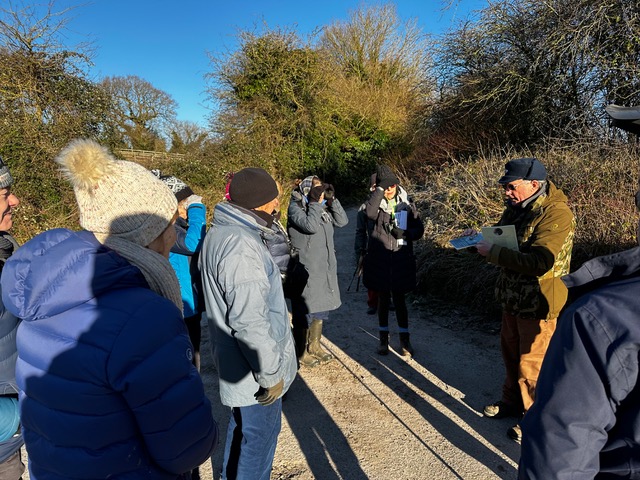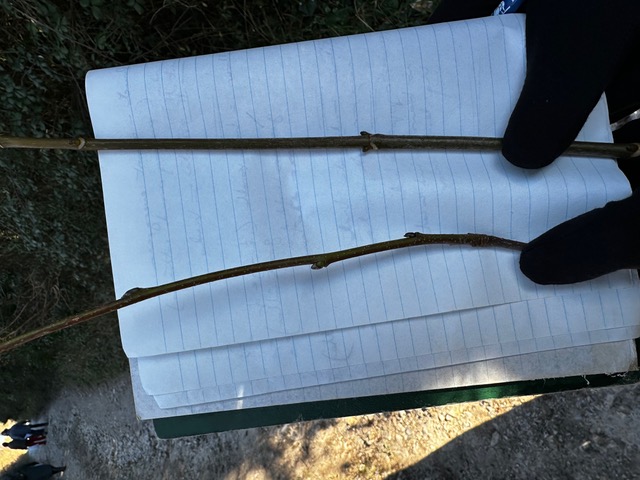Field Reports
Tuesday 16 January - Deciduous Twig ID Leader: John Arnott
What a perfect day – blue sky but very chilly! Having car shared to the southern end of Chalkpit Lane, John gave 12 (well wrapped up) members a brief introduction while Philippa handed out hand lenses. There are several books / guides available – see the Field Studies Council and The Woodland Trust but we were to concentrate on the key, easily observed features to get us started. There follows a list of those identified (with a little of John’s folklore thrown in.)
First up were the olive green twigs of a Spindle with its opposite buds.
Secondly, Hazel (tree often in a ‘coppiced’ shape). The plump, flattened buds are alternate, russet on top and green underneath. The whippy twigs were used for weaving, divining, beating slaves (and wives too!)
Thirdly, English (pedunculate) Oak with its distinctive overall shape and contorted branches which were useful for the joints needed in ship building. It’s estimated that 3000 oaks were needed to build The Victory. Clusters of buds visible at the end of twigs.
Next came English Elm, twigs arranged at 60 degrees, alternate, very small, dark buds and clear leaf scars. Older twigs showed longitudinal, slightly corky ridges. Elms and beeches were referred to as ‘widow makers’ as they have a tendency to fall down without warning!
Beech was easy - pointy, cigar shaped buds growing divergent from the twigs (Hornbeam is similar but buds are close to the twigs or adpressed). Beech can also hang on to some leaves in winter, so helpful!
Field Maple had small, hairy, reddy brown buds and the remains of winged fruits. Maple was often used around stork nests on the continent - to protect them from bats apparently.
The Ash was distinctive with its large, sooty black, opposite buds. Where the buds are, the twigs broadened and flattened.
A diversion here – wheels were once constructed with the hub (elm), the spokes (oak) and the rim (ash) using their particular strengths and flexibility.
Wild Privet (almost an evergreen) twigs are bendy, may have black berries and have buds which are just off from opposite.
Grey Willow has very small, alternate buds with one bud scale. (The buds are half the size of the plump ones of Goat Willow.)
The greenish, pointed alternate buds (hairs on bud scales) of Common Whitebeam were contrasted with the opposite buds of Sycamore (no hairs on bud scales) and big leaf scars stretching all the way round the twigs. (See Photo)
Towards the end of our fascinating walk, were three more trees. A Wayfaring Tree with its large terminal buds and much smaller side shoot buds. The bright red twigs of a Dogwood stood out, with its opposite buds and no scales.
Finally, a Purging Buckthorn – a little like Wild Privet with the buds not quite opposite but had spikes between the pairs of buds (resembling roe buck’s antlers!?)
A wonderful introduction, winter walks will not be the same again! Apologies for the rather ‘dry list’ above but if you take time out to look at details it’s fascinating what is revealed.
Many thanks indeed to John.
Gill Hance
All pictures thanks to Christian Hance
Banner Photo: Helen Dignum

John introduces us to twigs

Whitebeam on the left: Sycamore on the right